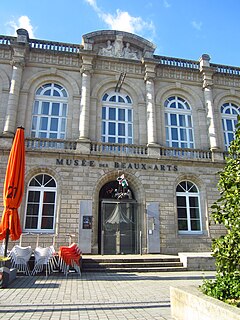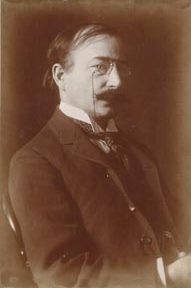Biography

Encouraged to study design and painting (water-colour), he took the design course run by Prosper Saint-Germain in Morlaix and then set up as a photographer. In April 1857 he married Adah-Ana Souvestre, a daughter of the Morlaix writer Émile Souvestre and his wife Nanine Souvestre-Papot, who was also a writer. Coming under the influence of the ceramist Michel Bouquet, and his interest in ceramics reviving during the time of the Second Empire, he started painting on pottery producing a variety of plates decorated with genre scenes of Breton life, flowers and historic portraits. After 1870, when he had failed to secure work with the "Faïencerie HB-Henriot Quimper" pottery, because Beau insisted on signing his work, he was backed by the widow of Adolphe Porquier and became the artistic director of the Porquier pottery and in time this became Porquier-Beau and their pieces were marked "PB". [1]
Beau exhibited his work both at the Salons and the large "Expositions universelles", in particular at the Universal Exhibition of 1878 where he earned a silver medal for his ceramic violoncello. As his work began to revitalize the ceramic industry in Quimper and other potteries began to copy his style. 1880 saw Beau made "conservateur" at Quimper's musée des beaux-arts. He encouraged the museum to build up their collection of Breton art and he contributed to this collection a diorama depicting a Breton wedding with some forty four mannequins emerging from the chapel all dressed in Breton costume.
He struck up a friendship with Joseph Astor, the then mayor of Quimper, and the owner of the Manoir de Kerazan in Loctudy, which he furnished with works of art. Astor's son, Joseph-Georges Astor, commissioned Beau to curate and complete his father's collection, and the Manoir de Kerazan contains many of Beau's works. [2] [3]



















